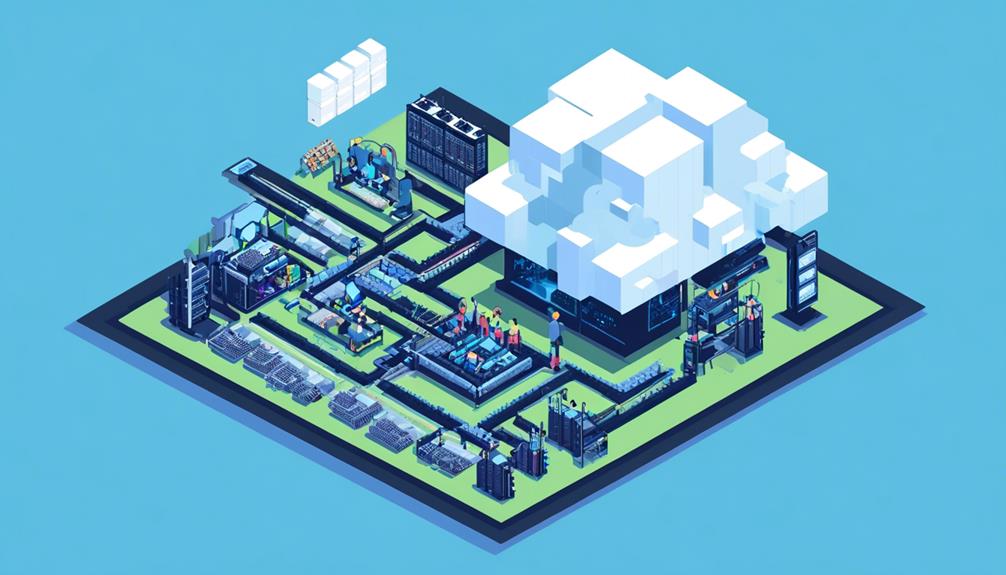Hardware accelerators in cloud computing have become increasingly important in recent years. Organizations are seeking to improve the performance and efficiency of their workloads. These specialized microprocessors offer a range of benefits, including increased processing power, energy efficiency, and parallel processing capabilities.
They can be seamlessly integrated with existing cloud infrastructure and are compatible with popular cloud platforms, making them a viable option for many businesses. However, implementing hardware accelerators comes with its own set of challenges. These challenges include hardware integration complexity and compatibility issues.
Nevertheless, the future of hardware accelerators in cloud computing looks promising. There have been advancements in specialized accelerators, artificial intelligence integration, and collaboration between hardware and software vendors.
In this discussion, we will explore the various types of hardware accelerators, their use cases in cloud computing, and the potential benefits and challenges they present.
Key Takeaways
- Hardware accelerators in cloud computing offer enhanced processing power and energy efficiency, making them ideal for computationally intensive tasks.
- These accelerators provide parallel processing capabilities and accelerated data transfer speeds, leading to reduced latency and faster data processing.
- They are particularly effective for offloading computationally intensive vision processing tasks and optimizing CPU and GPU resources for improved system performance.
- Hardware accelerators in the cloud enable businesses to achieve high performance and energy efficiency for vision-related workloads, resulting in real-time insights and actionable information from visual data.
CPU Accelerators
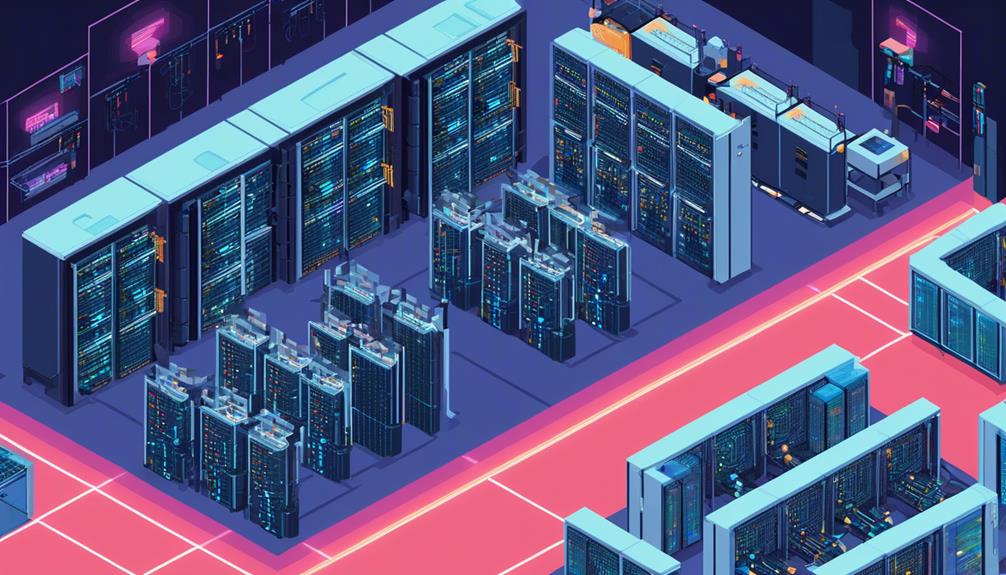
CPU accelerators provide enhanced processing power for computationally intensive tasks, contributing to improved energy efficiency, parallel processing capabilities, accelerated data transfer speeds, and overall system performance in cloud computing.
Hardware accelerators, such as graphics processing units (GPUs) and field-programmable gate arrays (FPGAs), are gaining popularity in cloud computing due to their ability to offload computationally intensive tasks from the central processing unit (CPU). By offloading these tasks, CPU accelerators can significantly improve the performance of cloud-based applications and services.
One of the key advantages of using CPU accelerators is their improved energy efficiency. Compared to traditional CPUs, which are designed for general-purpose computing, CPU accelerators are specifically optimized for parallel processing. This optimization allows them to perform complex calculations with greater efficiency, reducing energy consumption and, subsequently, cost and environmental impact.
Furthermore, CPU accelerators enable enhanced parallel processing capabilities. They consist of multiple processing cores that can simultaneously execute multiple instructions, allowing for the efficient processing of large amounts of data. This parallelism dramatically speeds up data processing and analysis, enabling applications to handle more significant workloads and deliver results in real-time.
In addition to parallel processing, CPU accelerators contribute to accelerated data transfer speeds and reduced latency. These devices are equipped with high-speed memory and optimized data transfer interfaces, enabling faster data movement within the system. This reduced data transfer latency improves the overall system performance, ensuring that cloud-based applications and services can deliver data to end-users quickly and efficiently.
GPU Accelerators
GPU accelerators, as hardware components in cloud computing, offer a significant boost in processing power for computationally intensive tasks, building upon the advantages of CPU accelerators. These powerful components provide enhanced parallel processing capabilities, allowing for efficient handling of multiple tasks simultaneously. By dividing the workload into smaller tasks and processing them in parallel, GPU accelerators can significantly speed up the overall computation process.
Here are five key benefits of using GPU accelerators in cloud computing:
- Increased processing power: GPU accelerators are designed to handle complex computations and can deliver immense processing power to tackle demanding tasks. This capability enables faster execution of algorithms and simulations, leading to quicker results.
- Enhanced parallel processing: With their multitude of cores, GPU accelerators excel at executing multiple tasks concurrently. This parallel processing capability allows for improved efficiency and faster completion of tasks compared to traditional CPU-based systems.
- Improved data transfer speeds: GPU accelerators are optimized for high-speed data transfer, which can greatly enhance system performance. The ability to move data quickly between the CPU and GPU accelerators minimizes bottlenecks and ensures smooth data processing.
- Reduced latency: Utilizing GPU accelerators can significantly reduce latency in cloud computing environments. The ability to process tasks in parallel and offload computation to the GPU accelerators results in faster response times for applications, enhancing overall user experience.
- Energy efficiency: GPU accelerators are known for their energy-efficient design, contributing to cost savings in cloud computing. By offloading computationally intensive tasks to GPU accelerators, the CPU can operate at lower power levels, reducing energy consumption and associated costs.
VPUs
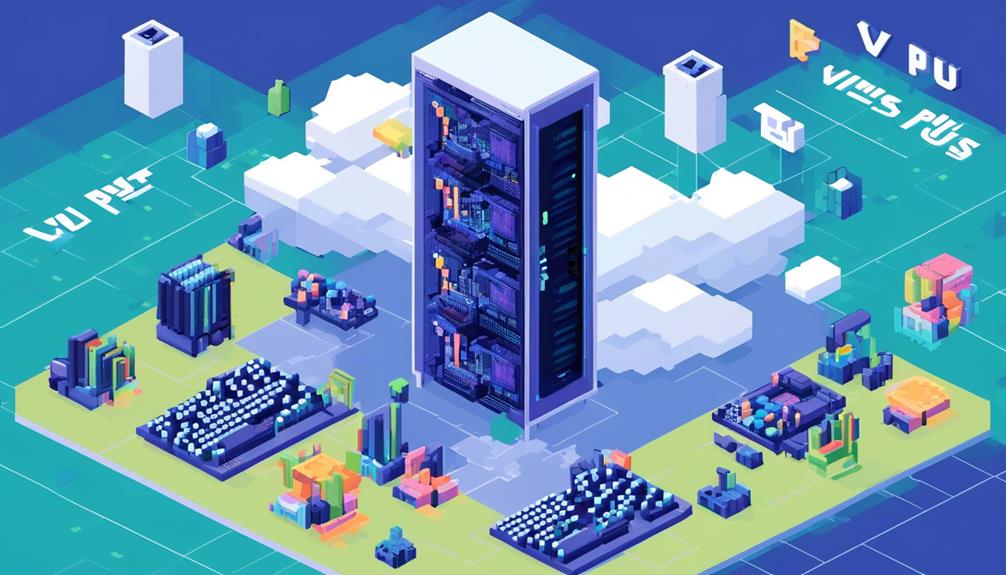
VPUs, also known as Vision Processing Units, are specialized hardware accelerators designed to optimize visual data processing tasks in cloud computing environments. These processors are specifically optimized for handling tasks such as image and video recognition, object detection, and other computer vision applications. VPUs offer high performance and energy efficiency, making them ideal for vision-related workloads in cloud computing infrastructures.
One of the key advantages of VPUs is their ability to offload computationally intensive vision processing tasks from general-purpose CPUs and GPUs. By offloading these tasks to VPUs, overall system performance can be greatly improved. VPUs are designed to handle the complex algorithms and calculations involved in visual data processing, allowing CPUs and GPUs to focus on other tasks.
The use of VPUs in cloud computing environments plays a critical role in accelerating the processing of visual data. This enables faster and more efficient analysis and interpretation of images and videos. By leveraging the hardware acceleration capabilities of VPUs, cloud computing platforms can deliver real-time insights and actionable information from visual data.
To illustrate the benefits of VPUs in cloud computing, consider the following table:
| Hardware Accelerator | VPUs |
|---|---|
| Specialization | Vision Processing |
| Performance | High |
| Energy Efficiency | Optimized |
As shown in the table, VPUs are specialized for vision processing tasks, offering high performance and energy efficiency. This specialization allows them to handle visual data processing efficiently, leading to improved performance and reduced energy consumption in cloud computing environments.
FPGAs
FPGAs, known as field programmable gate arrays, are highly versatile hardware accelerators utilized in cloud computing environments for their adaptability and ability to perform specialized tasks. These programmable chips offer a range of benefits that make them an attractive choice for various applications in cloud computing.
Here are some key facts about FPGAs:
- Flexibility: FPGAs can be reprogrammed after manufacturing to perform specific tasks, allowing for adaptability in diverse computing needs. This flexibility makes them ideal for applications that require frequent updates and customization.
- Parallel Processing: FPGAs excel in processing parallel tasks, making them suitable for applications demanding high throughput and low latency. Their parallel architecture enables simultaneous execution of multiple operations, resulting in improved performance.
- Offloading CPU Functions: FPGAs play a crucial role in cloud computing by offloading specific functions from the CPU. By offloading compute-intensive tasks to FPGAs, overall system performance can be enhanced, as these accelerators are optimized for specific workloads.
- Cloud RAN Networks: FPGAs are widely used in cloud RAN (Radio Access Network) networks for offloading compute-intensive functions and achieving energy-efficient processing. These networks require high-performance hardware accelerators to handle the demanding communication and processing requirements.
- Customization: With FPGAs, developers have the ability to design and implement custom logic circuits, tailored to their specific application requirements. This customization allows for optimized performance and power efficiency, making FPGAs a versatile choice for hardware acceleration.
ASICs

ASICs, also known as application-specific integrated circuits, are highly specialized hardware components designed for specific computing tasks, offering high efficiency and performance for targeted workloads. These hardware accelerators are tailored to perform a particular function or set of functions, making them ideal for repetitive and computationally intensive operations in data centers. ASICs are commonly used in cloud computing for tasks such as encryption, networking, and data processing due to their optimized design.
ASICs are known for their low power consumption and high throughput, which enables them to outperform general-purpose processors in specific use cases. Their ability to deliver high performance with minimal energy consumption makes them an attractive choice for cloud computing applications.
Here is a visual representation of the advantages and characteristics of ASICs:
| Advantages | Characteristics | Use Cases |
|---|---|---|
| High efficiency | Specialized design | Encryption |
| High performance | Tailored for specific tasks | Networking |
| Low power consumption | Low energy usage | Data processing |
ASICs excel in scenarios where specialized processing units are required. Their optimized design allows for faster and more efficient execution of specific tasks, leading to improved performance and reduced latency. By leveraging the strengths of ASICs in cloud computing, data centers can achieve higher processing speeds and improved energy efficiency, ultimately enhancing the overall performance and cost-effectiveness of their operations.
Storage Accelerators
Storage accelerators play a crucial role in optimizing data transfer and access speeds for storage solutions in cloud computing. These accelerators utilize specialized hardware components to enhance the processing and management of data, resulting in improved performance and efficiency of storage systems. By reducing latency and increasing throughput, storage accelerators contribute to faster data processing, reduced energy consumption, and improved scalability for storage in cloud environments.
Here are five key points about storage accelerators:
- Enhanced Data Processing: Storage accelerators enable faster data processing by offloading compute-intensive tasks from the CPU to specialized hardware components. This allows for more efficient utilization of computing resources and improved overall system performance.
- Improved Storage Access: With storage accelerators, the time required to access and retrieve data from storage solutions is significantly reduced. This is especially beneficial for applications that require real-time data access or involve large-scale data processing.
- Optimization for Machine Learning: Storage accelerators can be specifically designed to cater to the needs of machine learning workloads. These accelerators can accelerate training and inference tasks by providing dedicated hardware support for matrix operations and other computationally intensive operations.
- Seamless Integration: Storage accelerators can be seamlessly integrated with existing cloud infrastructure, making it easier to optimize storage operations without requiring significant changes to the overall system architecture. This allows organizations to leverage the benefits of storage accelerators without disrupting their existing cloud infrastructure.
- Scalability and Cost Efficiency: By improving the performance and efficiency of storage systems, storage accelerators enable organizations to scale their storage solutions more effectively. This leads to cost savings, as organizations can achieve higher storage capacities and performance levels without the need for significant hardware investments.
Fast Connectivity
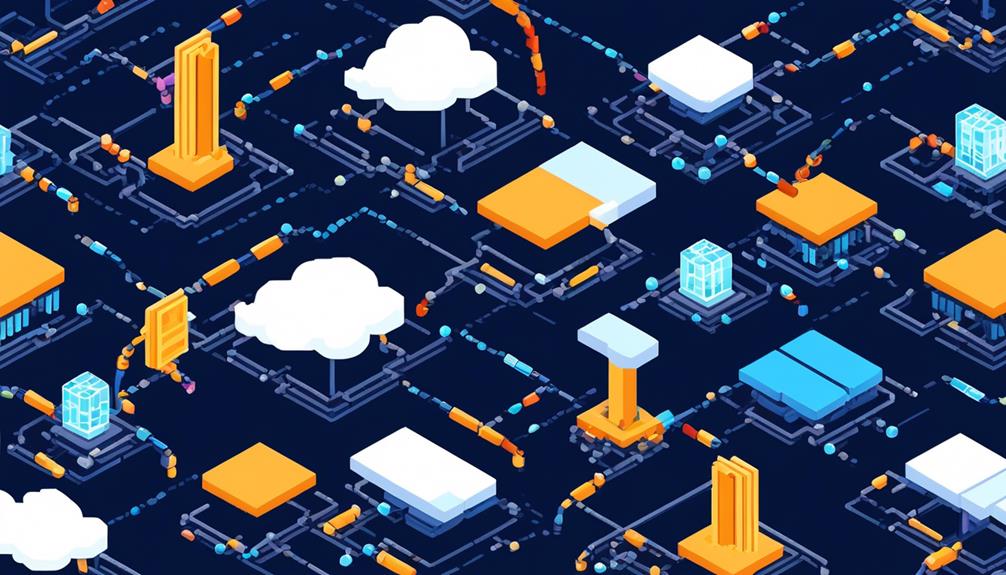
Fast connectivity is a crucial component that enables rapid data transfer speeds within cloud computing environments. It plays a vital role in facilitating quick communication and exchange of information between hardware accelerators and the cloud infrastructure. By ensuring high-speed connectivity, fast connectivity reduces latency and minimizes the delay in data transmission, leading to improved performance.
One of the key benefits of fast connectivity is its ability to support efficient workload distribution. It enables swift transfer of data between different components of the cloud infrastructure, such as edge computing devices and data centers. This efficient data transfer ensures that the workload is evenly distributed, optimizing resource utilization and enhancing overall system performance.
Fast connectivity also plays a significant role in enhancing user experience and responsiveness in cloud-based applications and services. With high-speed connectivity, users can access and interact with cloud resources seamlessly, without experiencing any noticeable delays. This is particularly crucial in scenarios where real-time data processing or low-latency communication is required.
Moreover, fast connectivity is essential for edge computing, where data is processed closer to the source or the edge of the network. By providing quick data transfer capabilities, fast connectivity enables edge devices to send data to the cloud for further processing and analysis, enhancing the efficiency and responsiveness of edge computing applications.
NVMe SSD
NVMe SSDs offer significant performance benefits for cloud computing infrastructure.
With faster data transfer speeds, reduced latency, and improved I/O capabilities, these SSDs optimize input/output operations for data-intensive applications.
However, it is important to consider the cost implications of implementing NVMe SSDs, as they can be more expensive compared to traditional SSDs.
Performance Benefits of NVMe
The adoption of NVMe SSDs in cloud computing environments brings about significant performance enhancements, revolutionizing data transfer speeds and overall system efficiency.
Here are some of the performance benefits offered by NVMe:
- Faster data transfer speeds: NVMe SSDs offer significantly faster data transfer rates compared to traditional storage solutions, enabling quicker access to data and applications.
- Reduced latency: The reduced latency of NVMe SSDs ensures faster response times, enhancing user experience and system responsiveness.
- Enhanced parallel processing capabilities: NVMe SSDs provide efficient multitasking capabilities, allowing for faster execution of concurrent workloads.
- Increased processing power: The advanced architecture of NVMe SSDs leads to increased processing power, enabling faster data processing and analysis.
- Improved energy efficiency: The utilization of NVMe SSDs in cloud computing environments leads to cost savings through improved energy efficiency, contributing to overall operational efficiency.
Cost Considerations for NVMe
When considering the implementation of NVMe SSDs in cloud computing environments, it is crucial to carefully evaluate the cost implications associated with this advanced storage technology. Cost considerations for NVMe include the initial investment in hardware and the potential savings from improved energy efficiency.
While NVMe SSDs may have a higher upfront cost compared to traditional storage options, the overall cost-effectiveness should be evaluated based on specific workload requirements and performance gains. Factors such as data transfer speeds, storage capacity, and the potential impact on overall system performance should also be taken into account.
Additionally, evaluating the total cost of ownership over the lifespan of NVMe SSDs, including maintenance and potential future upgrades, is essential. By considering these cost considerations, organizations can make informed decisions regarding the implementation of NVMe SSDs in their cloud computing environments.
Computational Storage
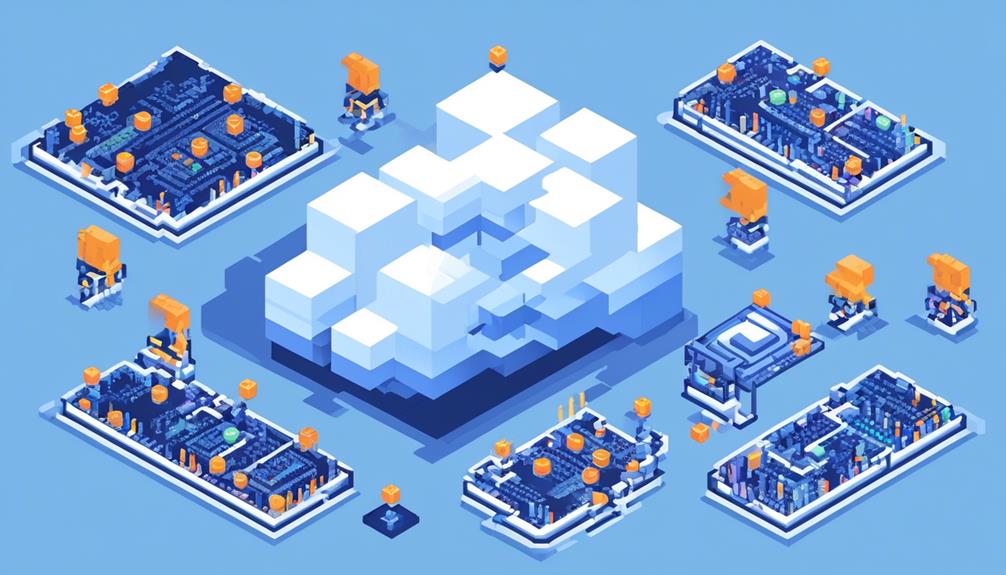
Computational Storage integrates computing capabilities directly within storage devices, revolutionizing data processing and analysis in storage systems. It enables efficient data processing and analysis directly within the storage system, reducing latency and improving overall system performance.
By utilizing specialized hardware components within storage devices, Computational Storage offloads compute-intensive tasks such as data compression, encryption, and search operations. This offloading reduces the burden on the central processing units (CPUs) and accelerates data-related operations.
The integration of Computational Storage with cloud infrastructure enhances data processing efficiency and supports the scalability of storage systems in cloud environments.
Benefits of Computational Storage in cloud computing include:
- Reduced data movement: By performing computations directly within the storage devices, Computational Storage minimizes the need to transfer large amounts of data between the storage and processing units. This significantly reduces latency and improves overall system performance.
- Enhanced processing capabilities: Computational Storage enables storage devices to perform complex computations, such as data analytics, in parallel with traditional storage operations. This allows for real-time data processing and analysis, leading to faster insights and decision-making.
- Improved data security: With Computational Storage, encryption and decryption operations can be performed within the storage devices themselves, reducing the risk of data exposure during transfer between storage and processing units.
- Efficient resource utilization: By offloading compute-intensive tasks to specialized hardware accelerators within the storage devices, Computational Storage frees up the CPU resources for other critical tasks, improving overall system efficiency.
- Scalability: Computational Storage supports the scalability of cloud storage systems by distributing processing capabilities across multiple storage devices. This allows for the seamless expansion of storage capacity and computational power as needed.
PCIe Protocol
The discussion of the PCIe Protocol in the context of hardware accelerators in cloud computing encompasses several important points.
First, the speed and bandwidth capabilities of PCIe are crucial in determining the overall performance of hardware accelerators.
Secondly, understanding the architecture of PCIe is essential for efficiently connecting and utilizing accelerator devices.
PCIe Speeds and Bandwidth
The rate of data transfer between a computer's central processing unit and its peripheral devices is determined by PCIe speeds and bandwidth (PCIe Protocol). Understanding PCIe speeds and bandwidth is crucial for optimizing the performance of hardware accelerators in cloud computing.
Here are some key points to consider:
- PCIe 4.0 offers a maximum speed of 16GT/s per lane, doubling the bandwidth of PCIe 3.0, and providing increased data transfer rates for high-performance computing.
- The PCIe 5.0 standard further enhances bandwidth, reaching up to 32GT/s per lane, enabling faster communication between components in cloud computing environments.
- The PCIe protocol's scalability allows for the addition of more lanes, increasing overall bandwidth, and accommodating the growing demands of hardware accelerators in cloud computing.
- Efficient utilization of PCIe speeds and bandwidth is essential for ensuring smooth and efficient data processing in cloud computing infrastructures.
- Optimizing hardware accelerators in cloud computing requires a deep understanding of PCIe speeds and bandwidth to leverage the full potential of these technologies.
PCIe Architecture Overview
As we shift our focus to the PCIe Architecture Overview (PCIe Protocol), it becomes essential to understand the underlying framework that enables high-speed, low-latency communication and data transfer between the CPU and peripheral devices in a computer system. PCIe Architecture is a high-speed, serial I/O interconnect technology that revolutionizes the way devices communicate with each other. The PCIe Protocol defines the communication between the CPU and peripheral devices, allowing for efficient data transfer and communication. This protocol supports multiple lanes for data transfer, providing scalable bandwidth for different devices. To illustrate the benefits of PCIe Architecture, consider the following table:
| Features | Benefits |
|---|---|
| Hot-swappable | Easy addition or replacement of hardware components |
| Error detection and correction | Ensures reliable data transfer |
| Power management | Efficient power usage and conservation |
| Virtualization support | Enables resource sharing and efficient utilization of hardware |
The PCIe Architecture's advanced features make it an ideal choice for connecting hardware accelerators in cloud computing, providing high-performance and reliable communication between the CPU and these specialized devices.
PCIe Performance Considerations
PCIe performance considerations are critical in optimizing data transfer speeds and latency for hardware accelerators in cloud computing. Understanding the PCIe protocol is essential for achieving efficient data transfer and workload distribution within cloud infrastructure. Compatibility with popular cloud platforms is influenced by the PCIe protocol considerations in hardware accelerators.
The performance considerations of the PCIe protocol can impact the scalability and responsiveness of hardware accelerators in cloud computing. Efficient processing and analysis, as well as overall cost savings, are influenced by the PCIe performance considerations in hardware accelerators for cloud computing.
- PCIe protocol plays a crucial role in determining data transfer speeds and latency.
- Understanding the protocol is essential for optimizing workload distribution.
- Compatibility with popular cloud platforms is influenced by PCIe protocol considerations.
- Performance considerations of the protocol impact scalability and responsiveness.
- Efficiency in processing and analysis, as well as cost savings, are influenced by PCIe performance considerations.
Use Cases in Cloud Computing
Cloud computing offers a wide range of use cases, allowing organizations to leverage cloud services and resources to address their specific business needs and technical requirements. These use cases encompass a variety of scenarios and applications, spanning from data storage and backup to application hosting, disaster recovery, big data analytics, and machine learning.
One of the key areas where cloud computing is utilized is in the field of hardware accelerators. Hardware accelerators are specialized devices that enhance the performance of specific tasks or workloads. In cloud computing, hardware accelerators can be used to optimize the execution of computationally intensive tasks, such as graphics processing, video encoding, cryptographic operations, and machine learning algorithms.
By incorporating hardware accelerators into their cloud infrastructure, organizations can achieve significant improvements in performance and efficiency. For example, in the field of machine learning, hardware accelerators like graphics processing units (GPUs) or field-programmable gate arrays (FPGAs) can greatly accelerate the training and inference processes, enabling faster and more accurate predictions.
Moreover, hardware accelerators in the cloud enable businesses to scale their computational resources on-demand, allowing them to handle peak workloads efficiently and cost-effectively. This flexibility is particularly valuable in use cases where the demand for computational power fluctuates over time.
Frequently Asked Questions
What Is Meant by Hardware Acceleration?
Hardware acceleration refers to the utilization of specialized hardware components to enhance the performance and efficiency of specific computing tasks. It can be compared to a turbocharger for a car, boosting the speed and power of the overall system.
In cloud computing, hardware accelerators can include graphics processing units (GPUs), field-programmable gate arrays (FPGAs), and application-specific integrated circuits (ASICs). These accelerators provide advantages such as faster data processing, improved energy efficiency, and enhanced performance for computationally intensive tasks.
Examples of hardware accelerators include NVIDIA Tesla GPUs, Intel Arria FPGAs, and Google Tensor Processing Units (TPUs).
What Are the Hardware in Cloud Computing?
The hardware used in cloud computing plays a crucial role in ensuring the efficient operation and delivery of cloud services. It encompasses various components such as servers, storage devices, networking equipment, and data centers.
These hardware components provide the necessary infrastructure for storing, processing, and transmitting data in the cloud. The importance of hardware in cloud computing lies in its ability to support high-performance computing, scalability, and reliability.
Different types of hardware, including CPUs, GPUs, FPGAs, and ASICs, are utilized to optimize specific workloads and enhance overall system performance.
What Is Cloud Accelerator?
A cloud accelerator is a hardware component that enhances processing power in cloud computing environments. It offers improved energy efficiency and supports virtualization technologies.
Cloud accelerators enable faster data processing and analysis through enhanced parallel processing capabilities. They also accelerate data transfer speeds and reduce latency, resulting in improved performance in cloud computing.
Cloud accelerators have significant benefits in data analytics, as they enhance processing speed and enable faster insights. Additionally, they have a positive impact on machine learning performance, enabling more efficient training and inference processes.
What Are Accelerators in Computing?
Accelerators in computing refer to specialized hardware components or devices that are designed to enhance the performance of specific tasks or workloads. These accelerators can provide significant performance benefits in cloud computing environments by offloading compute-intensive tasks from the CPU to dedicated hardware.
They are often used in applications such as machine learning, data analytics, and scientific simulations, where high-performance computing is required.
The use of accelerators in cloud computing can improve overall efficiency, reduce latency, and enable faster processing of complex workloads.
